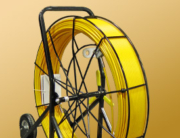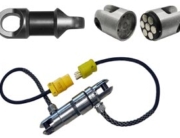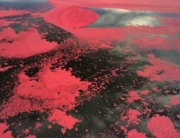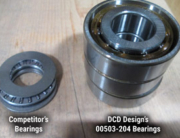Spent the morning at the foundry, inspecting the cast-alloy clevis ends of the 350 ton and 500 ton swivels, and discussing the method with the foundrymen there. Sand casting has a long history, contributing to the Industrial Revolution and the automotive industry in its formative years – both pivotal events!
DCD Design takes advantage of the efficiency of sand casting to put metal where it’s needed, in the chemistry desired, to gain the properties necessary for the Maxi-DUB swivels to excel in the difficult conditions encountered in directional bore holes.
Castings are poured, chilled, broken out and individually inspected to ensure a quality product, but each casting is unique. The mold is broken every time!
Castings of this size (over 800lb, in some cases) will typically show the pattern of the sand, and perhaps the impression of the chilling blocks and part line. Overall though, the massive castings are homogeneous after heat treatment and benefit from the grain structure imparted by the process.
Dendritic growth and phase transformation are technical terms for it, but imagine ice crystals forming in a complex geometry.
Then imagine a massive, solid piece of alloy steel crystallizing like a snowflake. With some perspective, the old ways are damned impressive!
Phone:
1-888-794-8357
Email:
sales@dcddesign.com







Leave A Comment